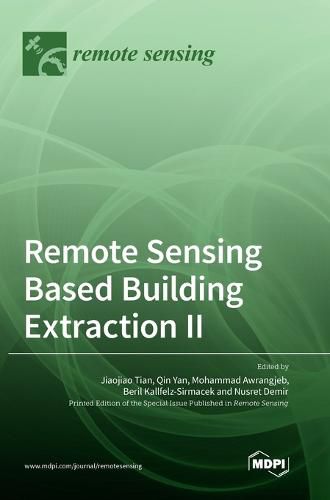Readings Newsletter
Become a Readings Member to make your shopping experience even easier.
Sign in or sign up for free!
You’re not far away from qualifying for FREE standard shipping within Australia
You’ve qualified for FREE standard shipping within Australia
The cart is loading…






This title is printed to order. This book may have been self-published. If so, we cannot guarantee the quality of the content. In the main most books will have gone through the editing process however some may not. We therefore suggest that you be aware of this before ordering this book. If in doubt check either the author or publisher’s details as we are unable to accept any returns unless they are faulty. Please contact us if you have any questions.
Building extraction from remote sensing data plays an important role in geospatial applications such as urban planning, disaster management, navigation, and updating geographic databases. The rapid development of image processing techniques and the accessibility of very-high-resolution multispectral, hyperspectral, LiDAR, and SAR remote sensing images have further boosted research on building-extraction-related topics. In particular, to meet the recent demand for advanced artificial intelligence models, many research institutes and associations have provided open source datasets and annotated training data, presenting new opportunities to develop advanced approaches for building extraction and monitoring. Hence, there are higher expectations of the efficiency, accuracy, and robustness of building extraction approaches. Additionally, they should meet the demand for processing large city-, national-, and global-scale datasets. Moreover, learning and dealing with imperfect training data remains a challenge, as does unexpected objects in urban scenes such as trees, clouds, and shadows. In addition to building masks, more research has arisen on the automatic generation of LoD2/3 building models from remote sensing data. This follow-up Special Issue of "Remote Sensing-based Building Extraction", has collected more research on cutting-edge approaches to essential urban processes such as 3D reconstruction, automatic building segmentation, and 3D roof modelling.
$9.00 standard shipping within Australia
FREE standard shipping within Australia for orders over $100.00
Express & International shipping calculated at checkout
This title is printed to order. This book may have been self-published. If so, we cannot guarantee the quality of the content. In the main most books will have gone through the editing process however some may not. We therefore suggest that you be aware of this before ordering this book. If in doubt check either the author or publisher’s details as we are unable to accept any returns unless they are faulty. Please contact us if you have any questions.
Building extraction from remote sensing data plays an important role in geospatial applications such as urban planning, disaster management, navigation, and updating geographic databases. The rapid development of image processing techniques and the accessibility of very-high-resolution multispectral, hyperspectral, LiDAR, and SAR remote sensing images have further boosted research on building-extraction-related topics. In particular, to meet the recent demand for advanced artificial intelligence models, many research institutes and associations have provided open source datasets and annotated training data, presenting new opportunities to develop advanced approaches for building extraction and monitoring. Hence, there are higher expectations of the efficiency, accuracy, and robustness of building extraction approaches. Additionally, they should meet the demand for processing large city-, national-, and global-scale datasets. Moreover, learning and dealing with imperfect training data remains a challenge, as does unexpected objects in urban scenes such as trees, clouds, and shadows. In addition to building masks, more research has arisen on the automatic generation of LoD2/3 building models from remote sensing data. This follow-up Special Issue of "Remote Sensing-based Building Extraction", has collected more research on cutting-edge approaches to essential urban processes such as 3D reconstruction, automatic building segmentation, and 3D roof modelling.